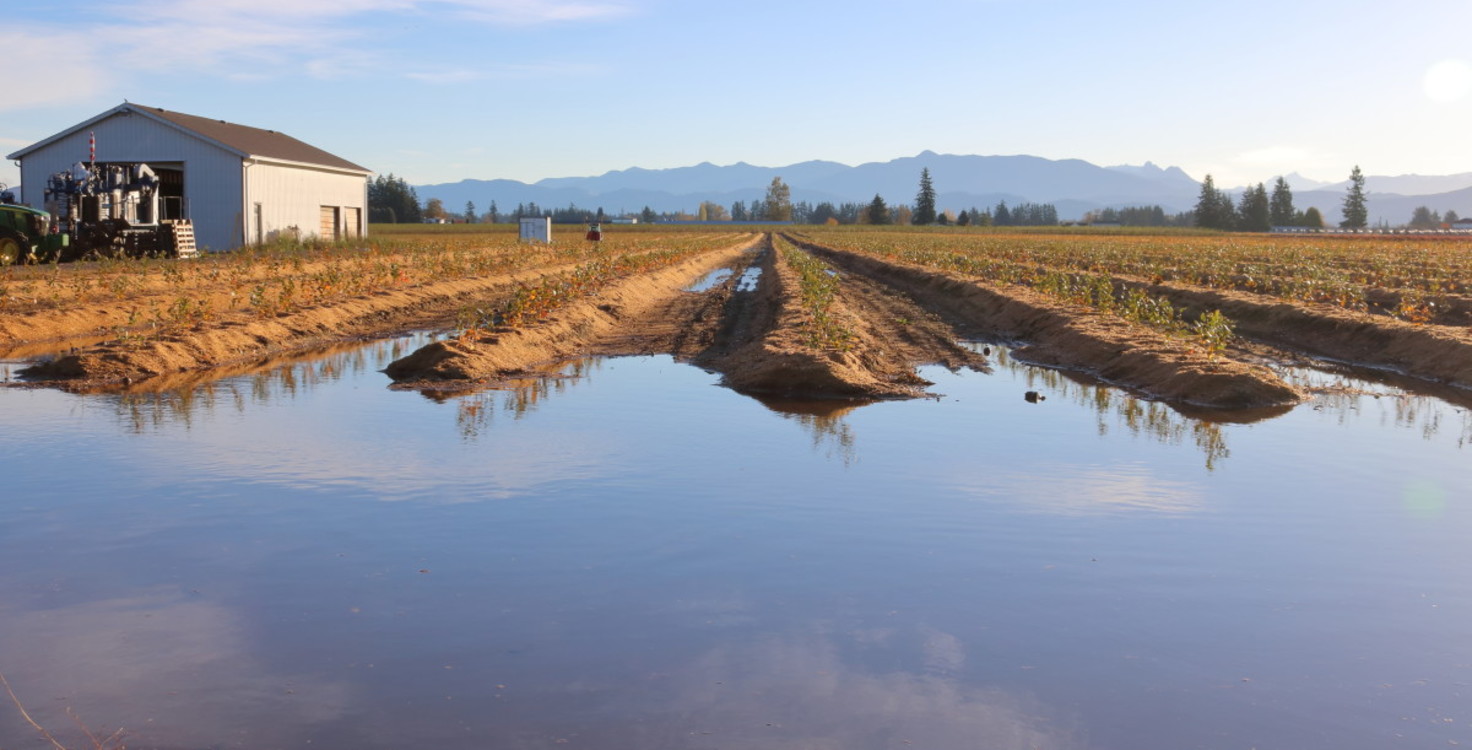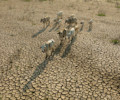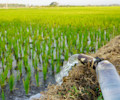In the final instalment of joint FAIRR-PRI blogs leading to COP30, Max Boucher of FAIRR, and Stephanie Strange of the PRI, highlight the synergies and trade-offs that investors face when considering the climate-nature nexus, and the tools that can help them navigate this nuanced topic.
The climate-nature nexus refers to the connection and interdependence between climate change and nature loss, where each problem exacerbates the other and the solutions for each are interlinked.
Well-functioning economies and societies rely on healthy ecosystems to provide essential services including climate regulation, drinkable water and pollination.
With seven of nine planetary boundaries breached as of September 2025, the global economic system is operating outside of safe environmental limits, which has financially significant implications for companies and investors.
For example, in 2024, climate-change exacerbated seasonal flooding in Spain caused 224 fatalities, €150 million (US$173 million) in crop losses and €3.5 billion (US$3.8 billion) in insurance losses. The extensive damage was blamed on poor management of public infrastructure and a lack of consideration for ecosystem functions in their development, such as urban development in river valleys and land degradation restricting water runoff.
Corporates and investors are just starting to recognise the connection between climate and nature, and that reflecting this in risk management and investment decisions is challenging.
Indeed, only 7% of companies and financial institutions assess their dependencies on biodiversity, according to CDP, and a third of companies operating in sectors with high water needs report that their use of freshwater is neutral or not important to their businesses success.
This insight piece explores some of the complementarities and trade-offs that investors face as they integrate the risks and opportunities of the climate-nature nexus into their investment and engagement decisions, as well as the tools that can help them navigate this nuanced topic.
Balancing climate and nature: Realising opportunities and navigating complex trade-offs
There are many synergies and trade-offs between climate and nature, especially for sectors with significant land-use exposure, such as agriculture for food production and livestock feed. These present navigational challenges for companies and their investors.
Investors are beginning to recognise that ending deforestation and conversion of other high-carbon and biodiversity-rich ecosystems is needed to abate global emissions. Thirty of the largest financial institutions joined calls by global leaders to halt and reverse forest loss by 2030, for example. Healthy and resilient agricultural land is good for business, and avoiding tropical deforestation is roughly seven to nine times more cost effective than restoration or reforestation, according to research from the World Resources Institute.
Over 80% of the 79 companies assessed by FAIRR in 2023 saw regenerative agriculture, which seeks to align farming with nature to ensure its sustainability, as an opportunity. Several of those companies, which represented US$3 trillion in combined annual revenues, specified they were paying premiums to farmers that adopt regenerative agriculture as an incentive to transition, suggesting they see a return on this investment.
Yet, having engaged with the global agri-food sector on biodiversity since 2021, FAIRR has found that managing the trade-offs from considering climate and nature risks is particularly challenging.
Meat and dairy producers around the world have invested in methane capture from manure to reduce their climate impact. Subsidies for this technology have driven an increase in the concentration of production, supporting farmers’ return on investment.
However, there are few policy incentives targeted toward reducing the proportion of valuable nutrients in manure that is lost to waterways and oceans. Target 7 of the Global Biodiversity Framework, which focuses on nutrient pollution, has also received little corporate attention.
Salmon feed provides another example. FAIRR has engaged with salmon producers on diversifying feed ingredients to reduce their reliance on wild-caught fish, given their global growth projections and those of the UN Food and Agriculture Organization. The FAO’s most recent estimates show that 64.5% of global fisheries are already exploited to maximum sustainable capacity, while 35.5% are classified as overfished. These levels are projected to grow further, meaning that fishery outputs cannot grow further if fish stocks are to be kept at sustainable levels or reduced to avoid overexploitation, impacting the future returns of companies and their investors.
Yet, some companies are reluctant to add more plant-based ingredients to their salmon feed to address the nature impacts of aquaculture over concerns this could raise the GHG emissions associated with land and fertiliser use.
Supporting investable solutions for climate and nature
For investors and companies seeking to identify the benefits of integrating nature into decision making, or to weigh up the trade-offs between climate and nature, there are frameworks that can support alignment and action.
For example, FAIRR mapped 22 on-farm technology and nature-based interventions using an integrated climate-nature assessment framework, based on the planetary boundaries. It found that nature-based solutions tend to benefit more planetary boundaries than tech-based solutions, with fewer negative trade-offs.
Yet nature-based solutions receive a fraction of the investment put towards climate financing, in large part because nature remains underpriced and undervalued in decision making, poorly reflecting the benefits to investors of taking up such opportunities across their portfolio.
At an international level, the Kunming-Montreal Global Biodiversity Framework emphasises the importance of having a stable and predictable climate to support thriving biodiversity (Target 8), and nature’s importance in sequestering carbon and building climate resilience (Target 11).
Capturing these climate-nature dependencies in targets and Nationally Determined Contributions would be a major step in empowering investors and businesses in all sectors to integrate climate and nature risks in decision making and bringing them into the mainstream.
Guidance and finance mechanisms are emerging in the market to advance integration. The Taskforce for Nature-related Financial Disclosures (TNFD) recently published guidance on nature in transition plans, designed to help investors and corporates meet their climate and nature targets by integrating nature into transition plans.
When combined with the TNFD LEAP framework, this can help organisations to prioritise their integration and stewardship approach to climate and nature commitments across their portfolios.
Of course, building organisational buy-in to take action can also be a barrier to integrating climate-nature nexus risks and opportunities into investment strategies.
Disclosures are emerging from corporates on the financial materiality of nature-related risks, though empirical evidence and financial valuations of impacts and dependencies remain limited. The PRI has produced a briefing to support investors to strengthen the internal case for action.
Support for investors to commit to nature opportunities is also growing, with recent guidance from WEF and TNFD looking more closely at the practical application of nature finance and the role private capital can play in closing the US$700 billion annual biodiversity funding gap by 2030.
The Tropical Forest Forever Facility, a Brazilian government-endorsed blended finance mechanism launched at COP30, aims to mobilise US$125 billion to reward forest conservation and restoration, and provides a clear opportunity for investors to protect nature while also achieving a financial return. Countries including Norway, Brazil, Indonesia, France and Portugal have committed capital to the fund alongside the Minderoo Foundation.
Other nature finance solutions gaining momentum include sustainability-linked bonds (SSBs) and loans (SSLs), ideal for financing large-scale nature investments due to their issuance size (typically US$100 million to US$300 million) and flexible use-of-proceeds, respectively. Annual issuance of SSLBs reached US$55 billion in 2024, while SLLs comprised 72% of the total ~US$982 billion invested in labelled loans in 2024.
The climate-nature nexus: Turning recognition into action
The interdependence between climate change and nature presents financial risks and opportunities that are yet to be fully realised. If the planetary boundaries continue to be breached, and systemic climate and nature risks escalate, portfolios across all sectors and asset classes will be impacted, with the agri-food industry at the forefront.
Integrating nature and climate considerations in investment strategies is essential to mitigate risks, realise synergies, unlock resilience, and deliver and safeguard long-term sustainable returns. Frameworks and mechanisms already exist to support and enable investors, such as the TNFD and the TFFF, but need to be adopted at scale to really catalyse this necessary shift.
As policymakers and global leaders, businesses and financial stakeholders gather at COP30, there is an opportunity to move from recognition to action – action that FAIRR and the PRI will continue to support.
FAIRR insights are written by FAIRR team members and occasionally co-authored with guest contributors. The authors write in their individual capacity and do not necessarily represent the FAIRR view.











